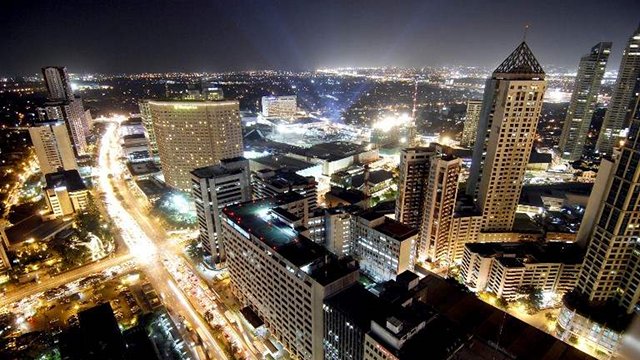SUMMARY
This is AI generated summarization, which may have errors. For context, always refer to the full article.

MANILA, Philippines (UPDATED) – The World Bank said the Philippines will grow at a faster pace in 2013 and 2014 as it estimates other economies in the region to slow down.
In its East Asia Pacific Economic Update released Monday, October 7, the multilateral lender said it expects the Philippines to grow at 7% in 2013 and 6.7% in 2014 as the country’s macroeconomic fundamentals remain strong.
These are upward revisions from World Bank’s April estimates of 6.2% to 6.4%, respectively, and matches the 2013 growth forecast of Asian Development Bank (ADB).
The Manila-based lender upgraded its growth forecast for the Philippines in 2013 and said in its recently released Asian Development Outlook report that the Philippines will grow 7% this 2013, higher than its forecast of 6% in April.
While the Philippines was the only Southeast Asian country to have its growth forecasts revised higher by the ADB, it was among the 3 economies the World Bank has upgraded. The others include the region’s “frontier markets” like Mongolia and Lao People’s Democratic Republic, which are expected to register growth of 10% and 8.1%, respectively, this 2013.
Inclusive growth
The Philippines’ healthy topline growth, however, has yet to translate to poverty reduction, noted Rogier van den Brink, World Bank’s lead economist poverty reduction and economic management.
“The 7% growth is not enough to reduce poverty,” Van de Brink said, citing the need to further develop the agriculture and manufacturing sectors, both key job generators.
READ: Many poor in Philippines? NSCB cites dismal agri sector
READ: Philippine industry’s revival for the long haul?
He also echoed calls to improve tax collection, which funds majority of the government’s social investments.
“The first step is to make tax structure simple and less complicated…World Bank thinks there is no need to increase taxes to increase revenue but look at efficiency in tax collection,” he said.
Bert Hofman, the bank’s regional chief economist, stressed: “More revenue generating measures are needed in the medium term to sustain inclusive growth programs for Philippines.”
Van de Brink also noted the delays in infrastructure projects meant to help sustain economic growth. “The government was ambitious on PPPs (public-private partnership scheme) in 2010. But when government started looking closely, they found it complicated.”
READ: ‘PPPs are complicated’
He added: “We support government’s track to scrutinize PPP deals first as so many past deals have gone wrong.”
Developing Asia to grow slower
These forecasts were in contrast to the World Bank’s estimates for developing Asia, which it now expects to grow 7.1% in 2013 and 7.2% in 2014.
The bank cited the slower growth of the region’s powerhouse, China. “Slow down in China remains a big risk for East Asia and Pacific countries,” Bert Hofman, chief East Asia and the Pacific economist for World Bank, said in a press briefing on Monday. China is a key trading partner and aid source of its neighbors.
The bank now expects China to meet the official indicative growth target of 7.5% in 2013 — far lower than World Bank’s previous 8.3% estimate, which was premised on a recent expansion in credit that turned out to be “less effective in generating growth.”
“Developing East Asia is expanding at a slower pace as China shifts from an export-oriented economy and focuses on domestic demand,” the bank said in a statement.
It also cited the “softening” in the economic growth rates of larger middle income countries, including Indonesia, Malaysia, and Thailand. It cited lower investment, lower global commodity prices and lower than expected growth of exports.
Excluding China, growth in developing East Asia is expected to decline from 6.2% in 2012 to 5.2% in 2013, before rebounding to 5.3% in 2014 and 5.7% in 2015.
“While this is a slight downward revision from World Bank projections in April 2013, developing East Asia is leading other regions,” the bank said in a statement.
East Asia Pacific contributes 40% of the world’s GDP growth, “more than any other region,” stressed Axel van Trotsenburg, World Bank East Asia and Pacific Regional Vice President. – with reports from Cherrie Regalado/Rappler.com
Add a comment
How does this make you feel?
There are no comments yet. Add your comment to start the conversation.